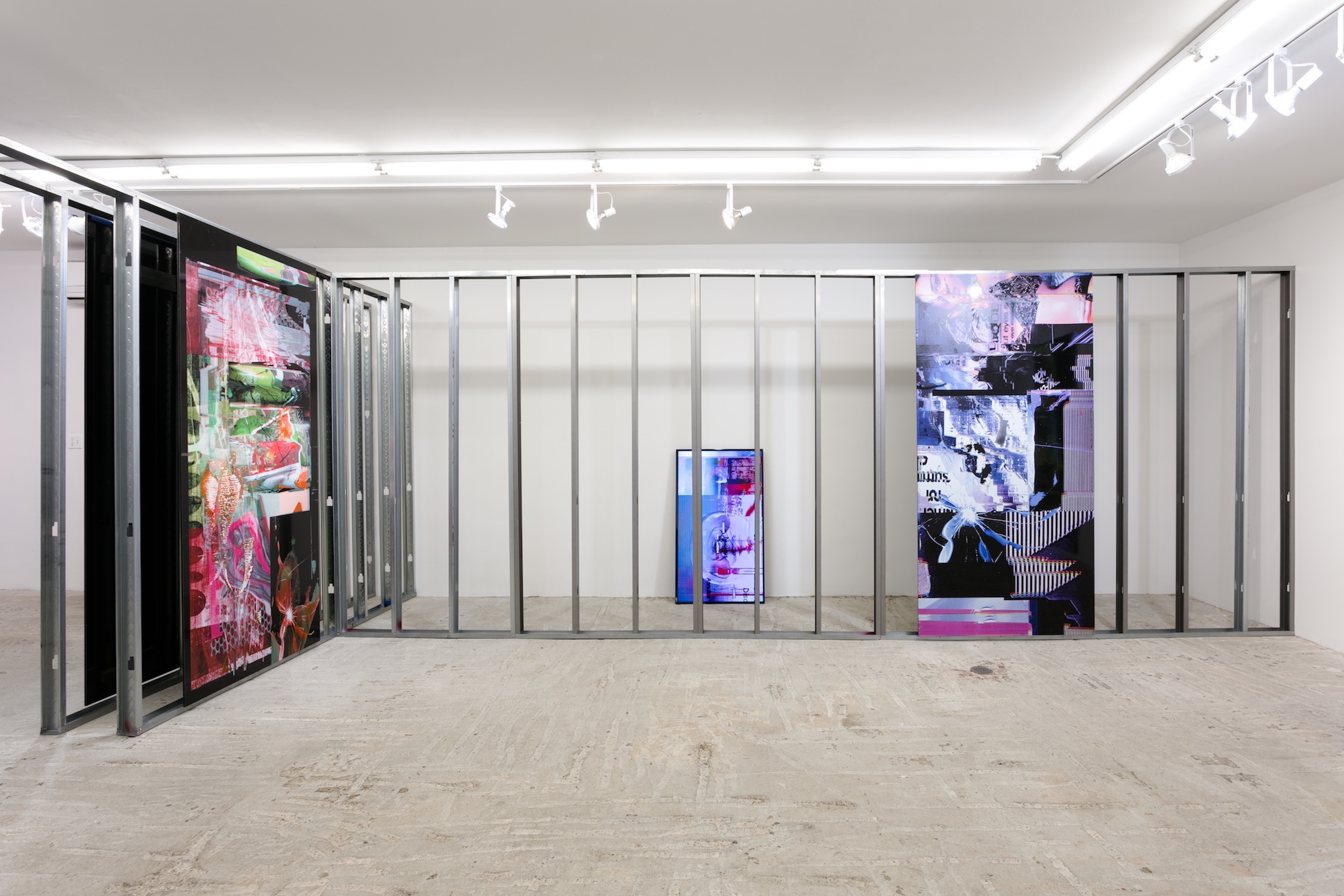
I enjoy cold weather, but as winter has proceeded the chill has felt more and more oppressive. Even after getting used to the low temperatures, the season’s seeming ceaselessness grows constrictive. I’ve found myself wandering around like an animal. Endless gallery hopping on the labyrinthine Lower East Side is emblematic of times like these.
On a recent afternoon, I started at the main branch of the New York Public Library. I was there to look at a rare book of botanical images by Elsa M Felsko (1908––1987), a German artist, illustrator and embroidery designer who was apparently self-taught. There one can also see So You Say You Want a Revolution: Remembering the 60s. The show includes artifacts and printed matter from the era, exploring the imagery and social upheaval for which it is mythologized. You can almost taste the warm, orange sunshine, looking at posters and zines from California, while snow threatens out the window.
From there I rode the F Train down to the 2nd Avenue stop. On Bowery, I stopped in at Salon 94 to see paintings by Judy Chicago
, whose germinal installation, The Dinner Party (1974––79), is permanently housed at the Brooklyn Museum. Chicago’s experiments here, oil and acrylic paintings from the 1980s, explain their datedness as a “prediction,” and in that they hit the mark. Here are images of men laughing, sneering, pissing, controlling, and the ethos and imagery echo the just unbelievable past few years; Donald Trump’s labial face plastered all over. In addition to everything else, he’s a visual insult, which Chicago’s images presciently emphasize.
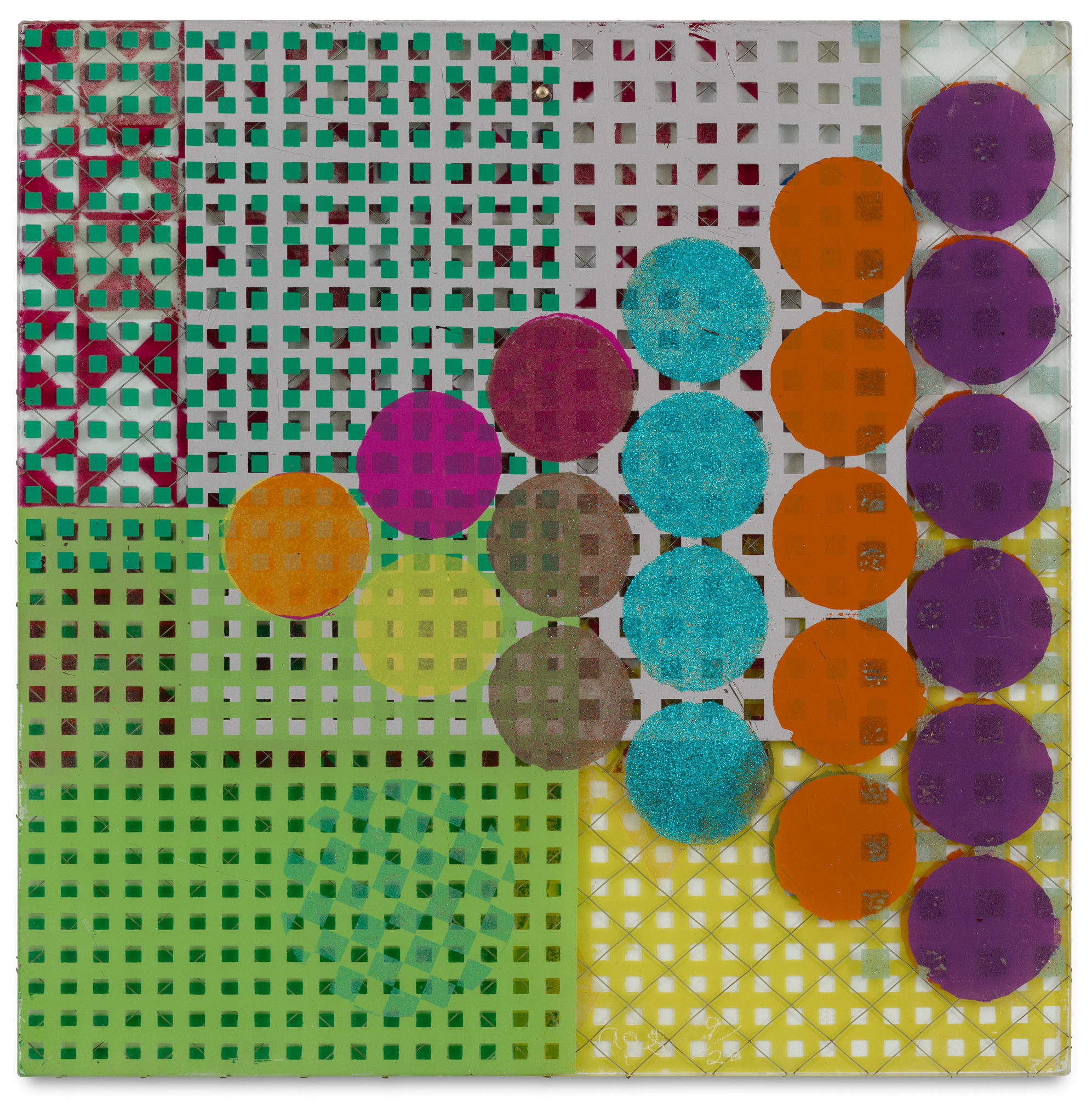
I backtracked up Bowery a little ways and turned right on Stanton, then right again onto Christie, to what was formerly 11R and now operates under the umbrella of Van Doren Waxter gallery. It is presenting a tight group show of textile artworks, called Alan Shields Project, paying homage to the artist, who died in 2005. A piece by Lisa Alvardo hangs from the ceiling, it mingles among a tightly packed and diverse array, including works by B Wurtz, Martha Tuttle and Cheryl Donegan. Shields’s fabrics are odd––like Jennifer Bartlett weirdo-geometry odd—with complicated patterns, strange references including roller derbies, and acid colours.
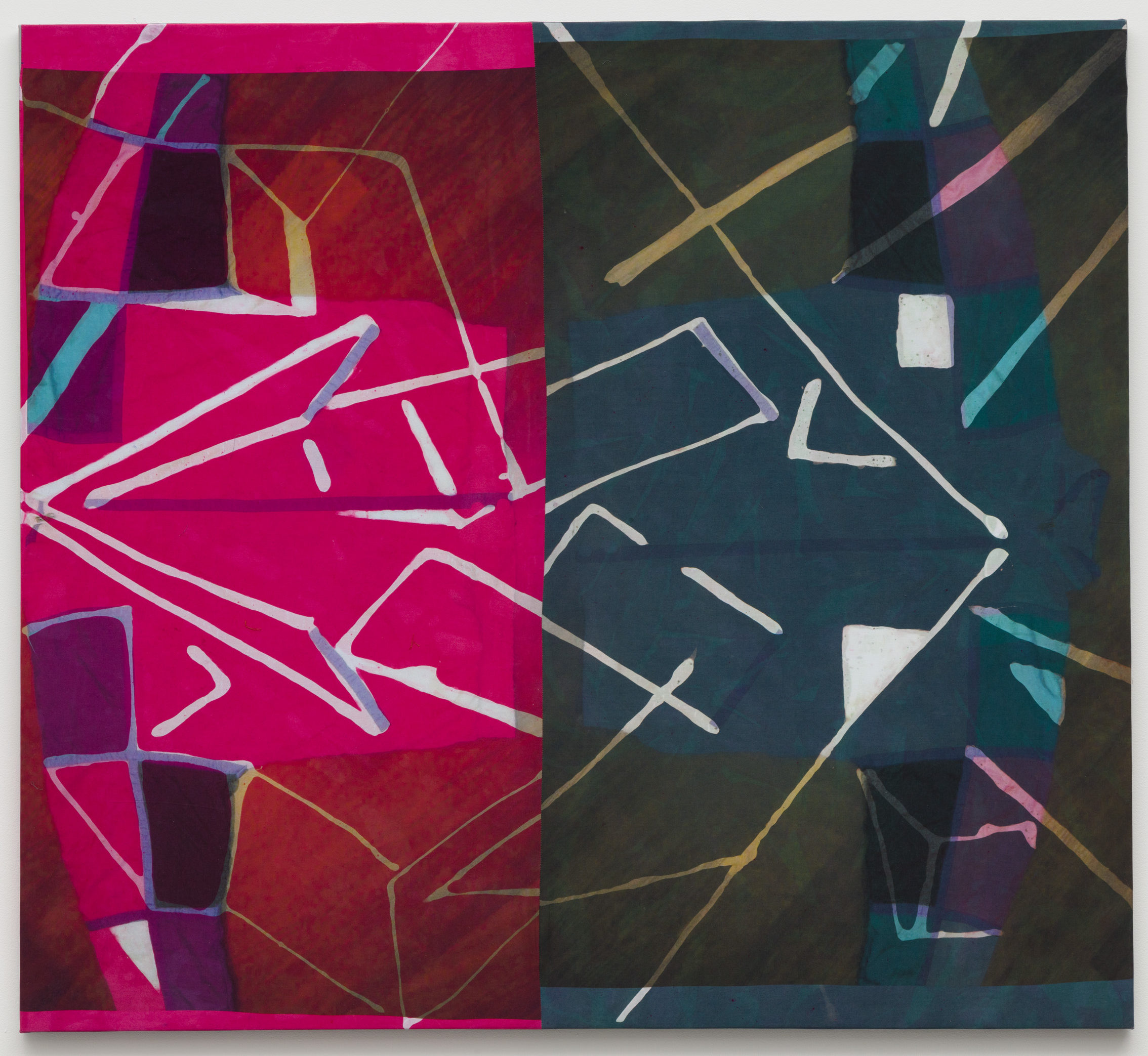
Cheryl Donegan, Untitled_track_resist_tumbling_dice, 2017, Dyed printed cotton, 44.5 x 49 inches, courtesy Van Doren Waxter
Down the street at 11 Rivington, the gallery’s previous location, is the newish home of an association by Tibor de Nagy and Betty Cuningham. The latter has a very small show of drawings and paintings by the late Jake Berthot, who died a little over three years ago. Called Marks Mountains and Skulls, the show is just that: works that show Berthot’s atmospheric mark making, sometimes with poetic, scrawled texts; memento mori images of skulls in dimly lit spaces; and drawings of mountains, mostly with a few suggestive marks made over half-erased grids, used to photo-realistically reproduce the landscape. These late works, following Berthot’s turn to representation, are nonetheless suggestive of his moody, muddy modus.
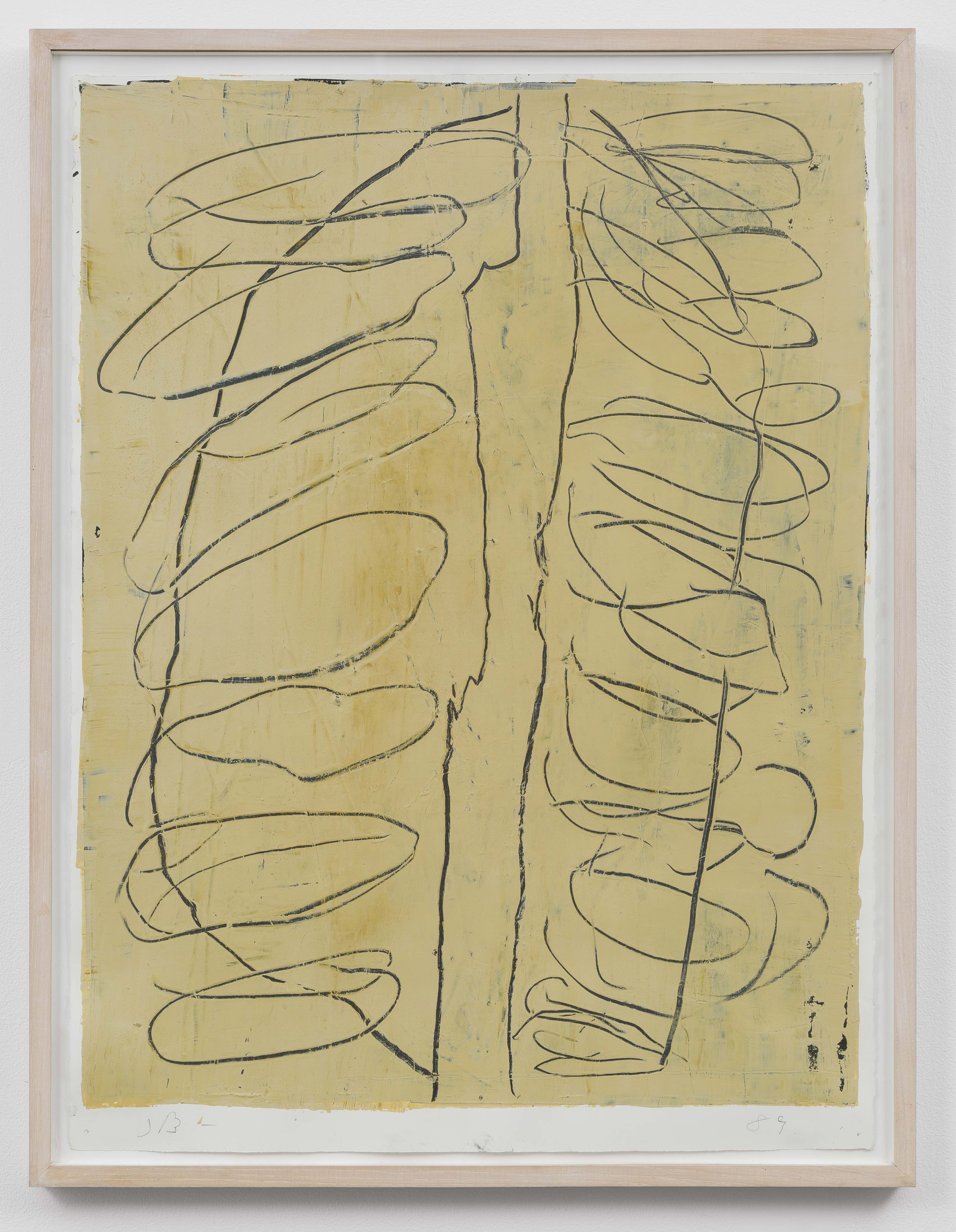
I detoured down Delancey to Petee’s Pie Company for some coffee and a slice. Around the corner, on Orchard, is Russ and Daughters, which is famous and consequently crowded, but if you like smoked fish and Jewish comfort food, and aren’t short on time, aim for that.
Back on the trail, on Forsyth, I hit Lyles & King, which currently has a show of work by Chris Dorland, founder of the gallery Magenta Plains, just a few blocks away. Dorland presents printed digital collages and videos playing on large vertical screens, leaned against cage-like wall studs. He stacks found footage, original images and 3D renderings into hypnagogic, expressively abstract surfaces, complexly layered and supremely flat. They look like a car wreck of visual culture and are framed by a quote from the inimitable William Gibson; that people erect psychic defenses against the present because they’re “most comfortable conceptually living about ten years back from whatever point in time we’ve reached.”
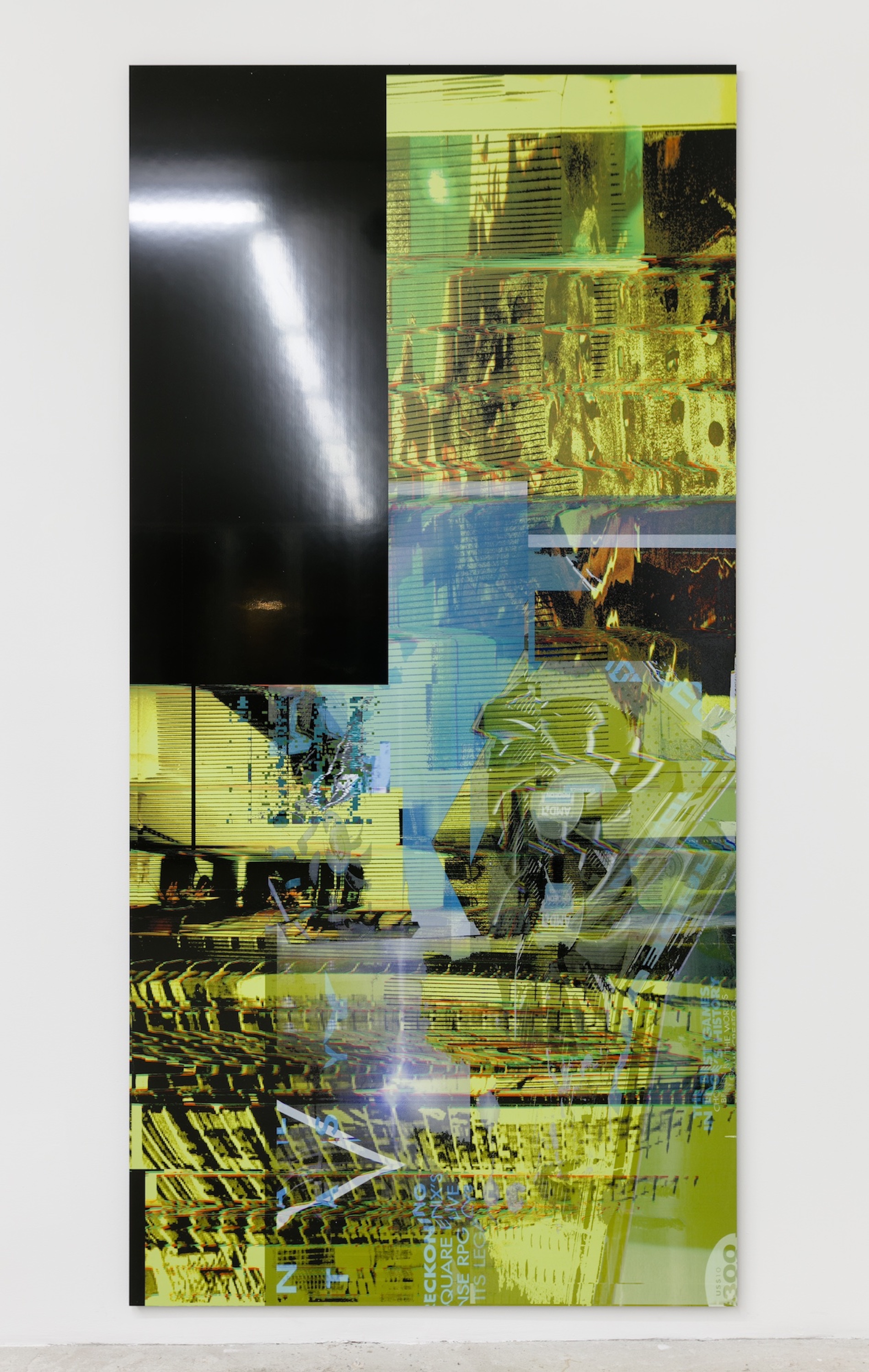
That’s probably true, though I was alive ten years ago and remember the discussions around how to continue what have since become the longest-running wars in American history, and the epileptic chaos of the world economy flaming the fuck out. I can’t tell if I was any more comfortable then than now. And in this, Dorland’s work resembles a horror movie: blood arching over a wall, alluding to the carnage happening just off screen.
I walked down to Eldridge and checked out Yours Mine & Ours, which currently has a group show, Mother’s House, which takes on kitsch and pleasure in works by eleven artists. There is a celebration of architect Robert Venturi, and the home he built for his mom. There are subtle cues: domestic labor as represented through Michelle Rosenberg’s Chinatown broom sculptures, a painting of Bill Clinton baking for Hillary by Nikki Katsikas, and a kiss-off for the accused sexual harasser and former ArtForum publisher Knight Landesman. Down on Orchard, at Kerry Schuss, drawings similar to Katsikas’s, by outsider artist Pearl Blauvelt, are on view, documenting her home in Northeast Pennsylvania, from the 1940s and 50s. She draws (and carefully labels) clothing, religious scenes, and home decor.

Her intense interest in representing the world around her is incredibly visceral, especially when compared to The New Minimalists, curated by Sarah Burney at the Abrons Art Center, down the street and around the corner at the Henry Street Settlement. That’s not to say that the young artists here—Abdolreza Aminlari, Niyeti Chadha, Noor Ali Chagani, Sam Chun, Jordan Nassar, Shahpour Pouyan, Freya Powell, Lauren Seiden, and Joseph Shelter—don’t use their work thoughtfully and emotionally. They do, tackling aesthetics and also personal and global politics. But their reductivism eschews the kind of tactility found in Blauvelt.
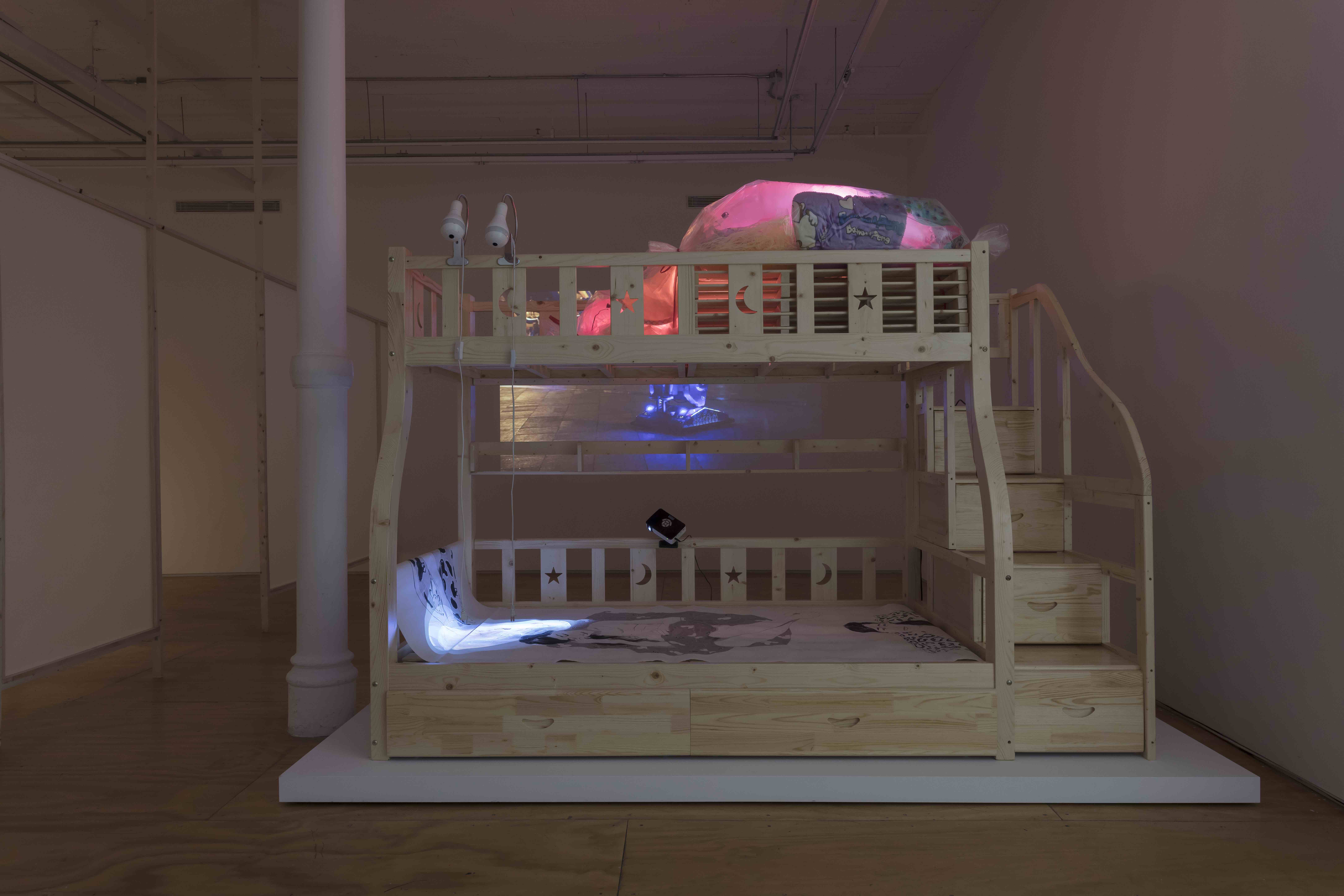
I hiked back to 47 Canal’s location at 291 Grand street (neighbor to galleries Nathalie Karg, Gavin Brown, Marc Strauss, and James Cohan) and checked out Mother Holding Taobao Child by Amy Lien and Enzo Camacho. The gallery has been studded with kids’ bunk beds and toys in sculptures that pay homage to Minimalism, Arte Povera, and Pop. These beds, and other products, are seen in a video, projected on a wall at the gallery. Parents cajole their very young children to engage with the products as a photographer shoots them and prepares the photos for use on online, intercontinental factory-to-consumer marketplaces, such as Alibaba. The kids do not seem totally stoked to become proxies for consumers, and the whole thing turns the fun they’re supposed portray into a severe downer. After walking in near circles for a few hours, my head’s spinning. I walked up to Butcher’s Daughter on Kenmare, for a swirl of carbonara pasta, happy to have gotten some cooped-up energy out of my system.





